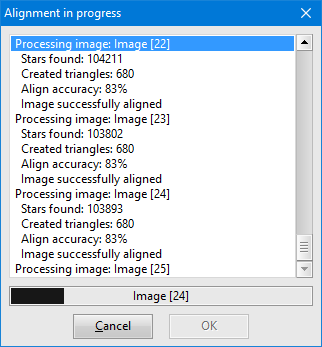|
The problem mentioned above did not affect SIPS functionality in
observing control, image acquisition, automatic guiding etc. It only
very occasionally occurred when a large amount of images (typically
more than 4 GB) were processed at once by
a bunch of background working threads running in parallel on each CPU
core available. Such operation could be e.g. calibration of large set
of images, mutual aligning of many images during image stacking or
when processing the time-series photometry etc. Very sporadic
occurrence of this problem was the main reason why it was not already
fixed in version 3.0.

Among new enhancements is the ability to save Photometry report
with time converted from Geocentric to Heliocentric JD. This feature
is especially useful when phasing light curves from multiple nights.
Heliocentric correction is a must in such case else the error
introduced by light travel time significantly harms the precision. And
converting the time in SIPS is the best place to do it as SIPS
typically knows all necessary information — geocentric time of observation, equatorial coordinates
of the object and geographic location of the observatory.
Another enhancement involves Astrometry, specifically reordering of
several steps withing the image matching. Now the final pairing of
stars detected within the image and stars from the catalog is
performed only after the final image center coordinates are
determined. This means the updated algorithm always pairs as much
catalog stars with image stars as possible independently on the
original image center precision.
A small performance hack was introduced into the image set
calibration. Rather time-consuming forward allocation of all resulting
images prior to distribution of the calibration itself into background
threads was moved into the threads themselves, which saves certain
time. Together with the optimization of calibration algorithm itself
(omitting of an unnecessary move of image data), the already very fast
calibration in SIPS become even faster.
SIPS is a freeware and can be downloaded from the Download section of this web site.
|